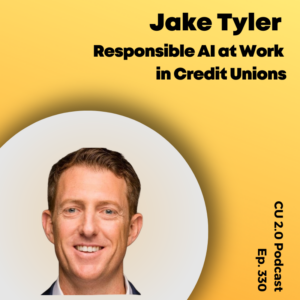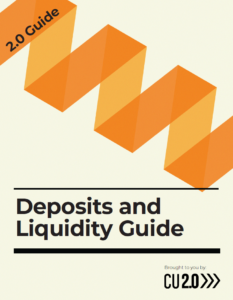A new report from the CFPB, “Consumer use of of payday, auto title and pawn loans,” underlines the magnitude of this issue. Nine percent of unbanked consumers are habitual users of high interest, high fee loans.
But that market size also gives credit unions—especially CDFI institutions with their overt community development focus but, really, just all about all credit unions with an active retail arm—a shiny, bright new member target that just may welcome attention from a credit union.
9% Is a Lot of People
That’s millions of consumers who may repay a helping hand with real loyalty.
How much loyalty? Samira Rajan, CEO of the $60 million Brooklyn Cooperative Credit Union, told us about a member whose loan had gone into default when she was deported. But flashforward a few months and that member was now in Arizona and she resumed paying on the loan.
(Hear the Rajan podcast with many, similar stories here.)
At Latino Community Credit Union, CEO Luis Pastor tells of members who were deported but still serviced their loans from their new homes in Mexico.
(Hear the Pastor podcast here.)
At Inclusiv, the trade association for CDFIs, CEO Cathie Mahon is adamant that there are reams of data that show a CDFI focused credit union can in fact be more profitable than one that attempts to compete with the big banks.
Pastor put it more bluntly: you can choose to compete with Bank of America, but you will lose more often than you win. The big bank has bigger scale, deeper pockets, and when it wants to win, it often will.
And on those occasions when you win, what have you won? Maybe you can issue a car loan at a rate lower than B of A’s 2.59% on a five-year loan… That was their rate for a new car from a dealer. (I just looked.)
A used car loan from B of A is 2.59% over 60 months on a purchase from a dealer.
But how much benefit is there for the institution in such thin-margined loans?
Where Credit Unions Come In
Meantime, up in Turlock, CA in California’s Central Valley, Randy Icelow, CEO of the Rolling F Credit Union, said he frequently refinances used car loans that have rates around 30%, sometimes higher, and he commonly can offer a refinance loan under 10%. That interest spread typically puts an immediate $100 or $200 more in a member’s pocket every month. Is that not a happy member who very probably will tell family and friends about Rolling F? But there’s money in this loan for Rolling F too.
(Hear the Icelow podcast here.)
Understand, too, that users of payday and similar loans are usually habitual users, and not necessarily because they want to. Rather, they are often unaware that some traditional financial institutions will welcome their business.
Sure, some FIs plainly do not want their business. They won’t say it in public, but with eye rolls and lip curls, they communicate who they don’t want in their branches.
But that’s some FIs, not all.
As for the habitual payday loan use, CFPB shared these data: “The survey results show that consumers frequently roll over these loans or take out a new loan soon after re-paying the previous loan. In June 2019, of the consumers who had taken out a loan in the previous six months, 63 percent still owed money on a payday loan; 83 percent still owed money on an auto title loan; and 73 percent still owed money on pawn loans.”
Can these consumers in fact be worth the bother? That’s bluntly what we asked then CEO of QCash, Ben Morales, a couple years ago. QCash was formed to offer much better priced payday loans. Think rates more like 29% rather than 75%. More credit unions are jumping on the QCash train because this is a proven system for making what amounts to alternative payday loans at rates that are much more favorable to the borrower and still profitable for the issuer.
(Hear the Morales podcast here.)
A closing thought to scare you:
In a discussion with Cliff Rosenthal, one of the founders of the CDFI movement, he said: “The number of credit unions falls by 200 to 300 each year. Ten years from now there will be 3000, 3500 credit unions.”
(Hear the Rosenthal podcast here.)
What’s a path to survival? Focus on potential members who will benefit, significantly and sometimes immediately, from a credit union’s helping hand. Provide education, a human touch, and (frequently) much better rates. That’s credit unions doing what credit unions do. And winning in the bargain.
Hear a weekly podcast on credit union issues – from the underbanked to DEI and the latest technological innovations at the CU 2.0 podcast.



